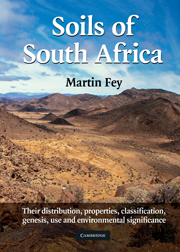Book contents
- Frontmatter
- Contents
- Preface and acknowledgements
- Chapter 1 Introduction to the soil groups and the naming of forms and families
- Chapter 2 The soil groups: distribution, properties, classification, genesis and use
- Chapter 3 Animals in soil environments
- Chapter 4 Profile descriptions and analytical data
- References
- Glossary
- Appendix: Criteria for generating distribution maps for soil groups
- Index
Chapter 3 - Animals in soil environments
Published online by Cambridge University Press: 05 June 2012
- Frontmatter
- Contents
- Preface and acknowledgements
- Chapter 1 Introduction to the soil groups and the naming of forms and families
- Chapter 2 The soil groups: distribution, properties, classification, genesis and use
- Chapter 3 Animals in soil environments
- Chapter 4 Profile descriptions and analytical data
- References
- Glossary
- Appendix: Criteria for generating distribution maps for soil groups
- Index
Summary
INTRODUCTION
Although soil scientists are aware of the role that animals play in forming soil and the reciprocal role of soil in providing for animals, they tend to think of animals as being of somewhat less importance than geology, climate, topography and vegetation in shaping the character of soil over time. Since human disturbance has greatly diminished populations of wild animals interacting with soil we tend to underestimate the intensity of soil-animal relationships in undisturbed ecosystems. On the other hand there are some who consider the upper part of soil primarily as a biomantle (Johnson, 1990; Johnson et al., 2005).
South African soils are – or have been – affected by animals in many different taxa exhibiting an extraordinary range of body size, population and activity. Some animals that lack size often make up for it in numbers. Soil in turn may benefit animals in a variety of ways. It functions as shelter, breeding ground, waste dump, source of food, dietary supplement and means of bodily hygiene. In exploiting soil, animals change it. Mixing, segregation and nutrient cycling take place. The consequences for porosity, aeration, water storage, drainage, density, erodibility and nutrient status can be profoundly important, both ecologically and economically.
In deciding on material for this chapter we have chosen conspicuous examples and have not attempted to describe a full or balanced spectrum of animal-soil interactions. The objective is to heighten awareness of how fauna affect soil properties and how soil affects the welfare of animals.
- Type
- Chapter
- Information
- Soils of South Africa , pp. 148 - 175Publisher: Cambridge University PressPrint publication year: 2010



